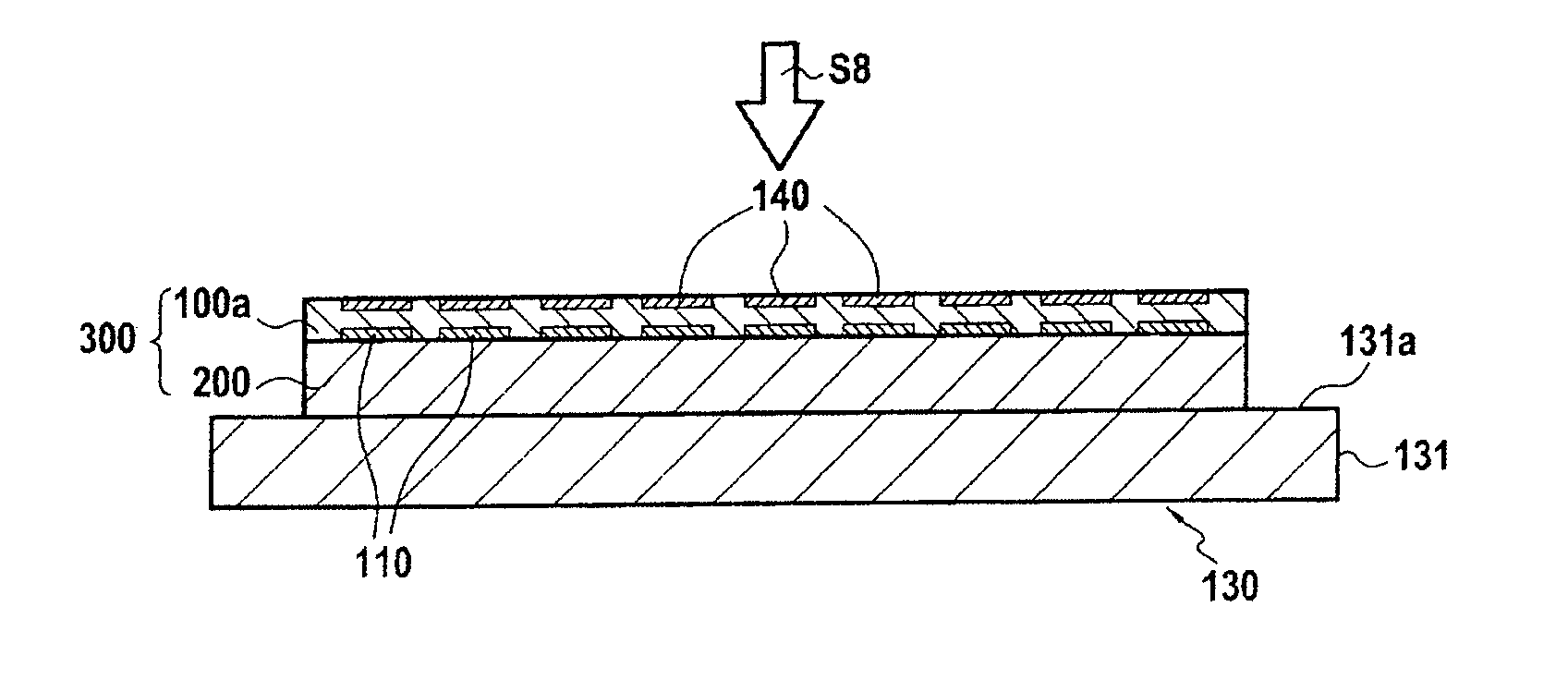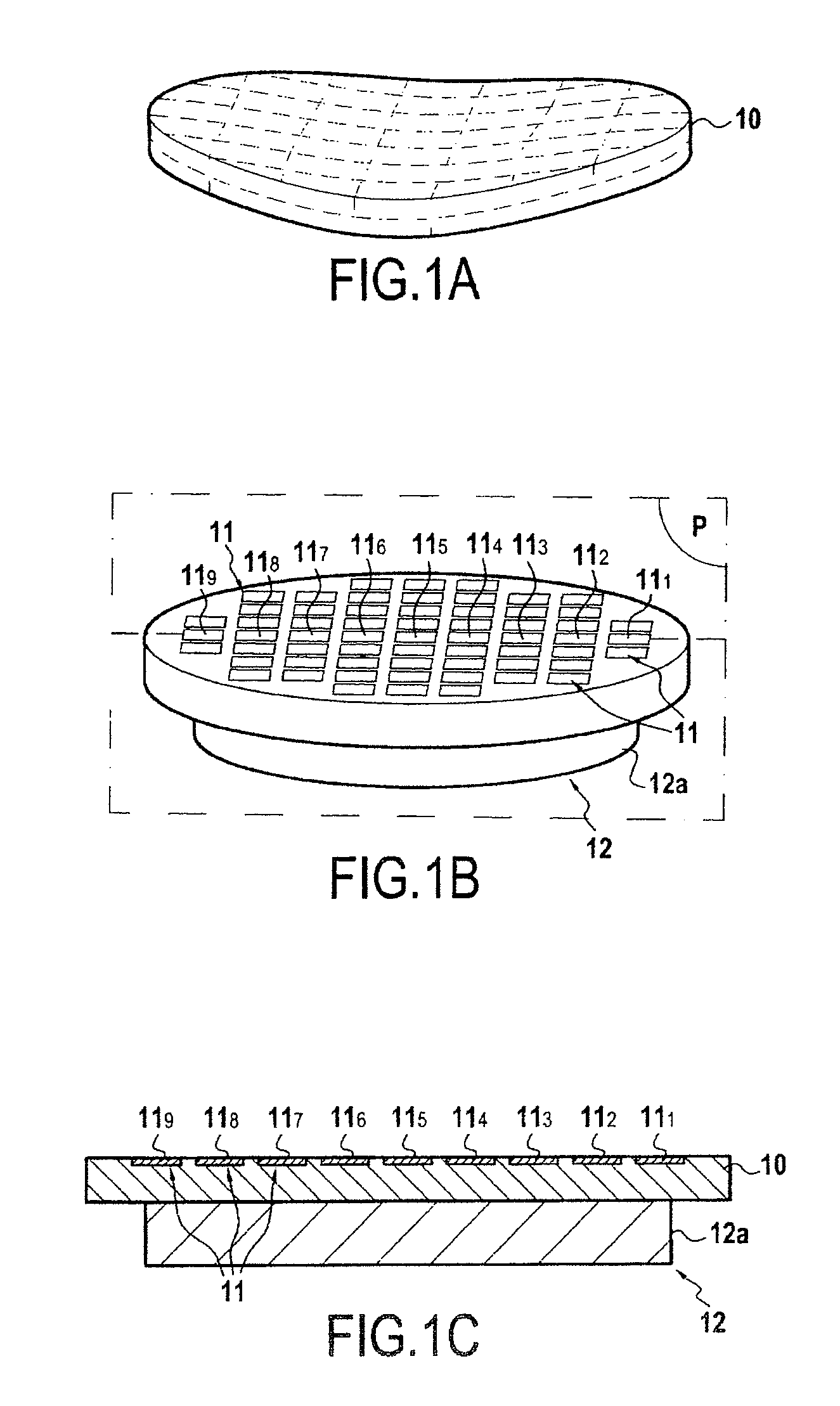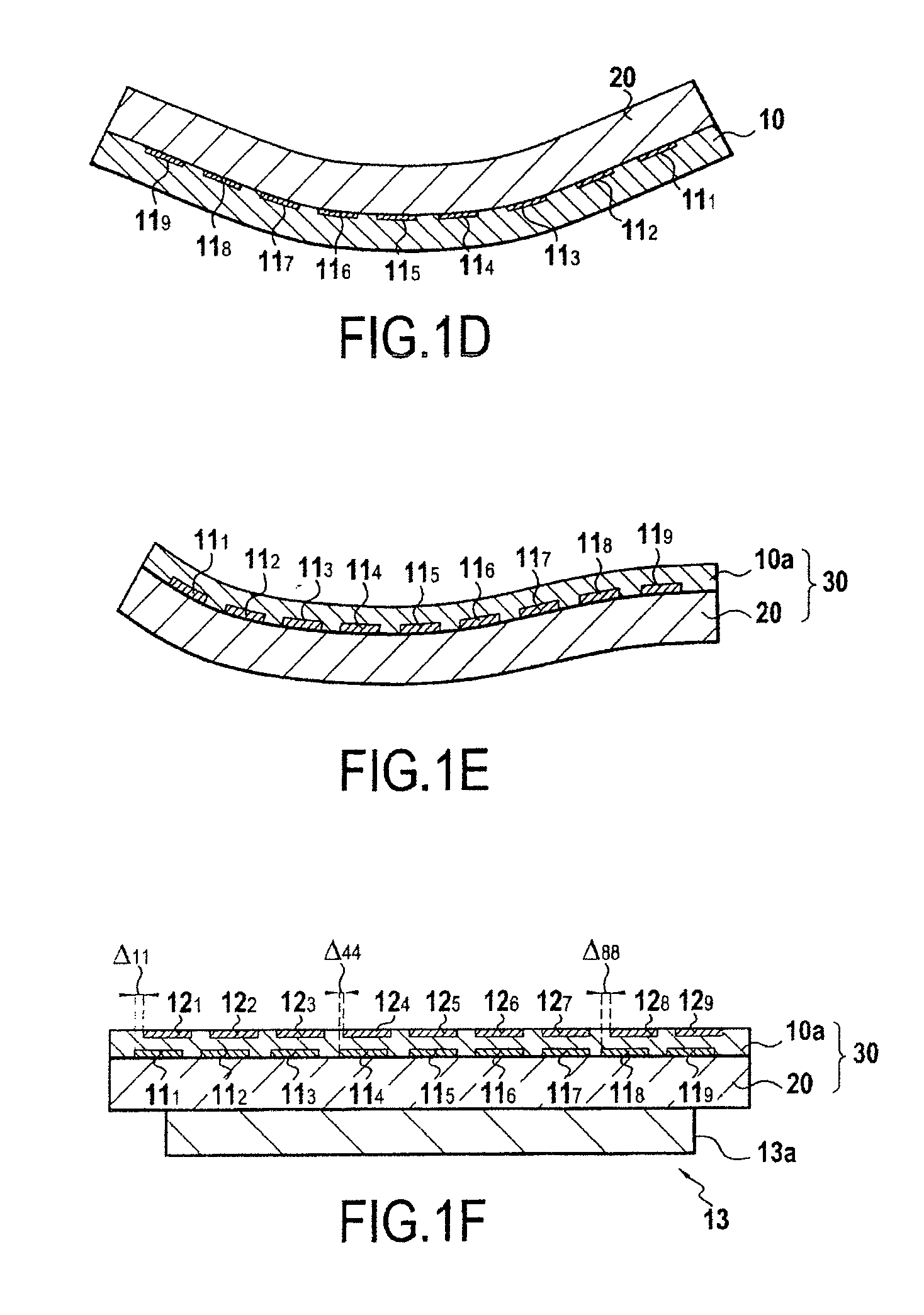Method of fabricating a multilayer structure with circuit layer transfer
- Summary
- Abstract
- Description
- Claims
- Application Information
AI Technical Summary
Benefits of technology
Problems solved by technology
Method used
Image
Examples
Embodiment Construction
[0035]The present invention is of general application to the production of composite structures comprising at least bonding, for example, by wafer bonding, a first substrate or wafer comprising components onto a second substrate or wafer.
[0036]As described above, after bonding, the geometry of the first substrate is different from that which it had when the components thereof were being formed. As a consequence, after bonding, offsets are created in the structures of the first substrate, which causes an overlay and a distortion between the originally formed components and those formed subsequently.
[0037]In order to minimize these phenomena and to allow the subsequent production of components in alignment with those formed on the first substrate before bonding, the present invention proposes holding, during bonding, one of the two substrates on a support of holding surface that has a flatness similar to or less than that of the support used to hold the first substrate during formatio...
PUM
 Login to View More
Login to View More Abstract
Description
Claims
Application Information
 Login to View More
Login to View More - R&D
- Intellectual Property
- Life Sciences
- Materials
- Tech Scout
- Unparalleled Data Quality
- Higher Quality Content
- 60% Fewer Hallucinations
Browse by: Latest US Patents, China's latest patents, Technical Efficacy Thesaurus, Application Domain, Technology Topic, Popular Technical Reports.
© 2025 PatSnap. All rights reserved.Legal|Privacy policy|Modern Slavery Act Transparency Statement|Sitemap|About US| Contact US: help@patsnap.com



